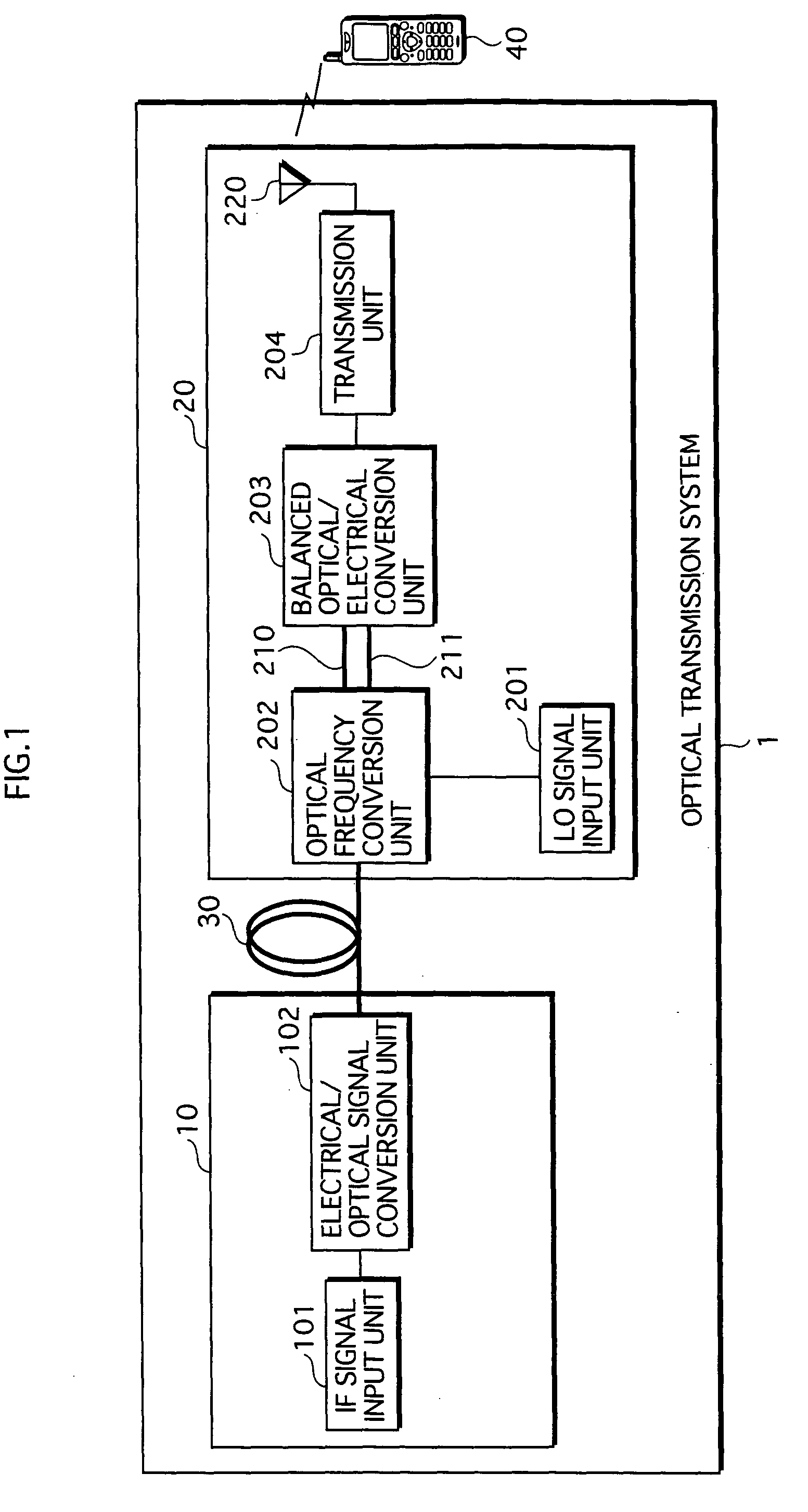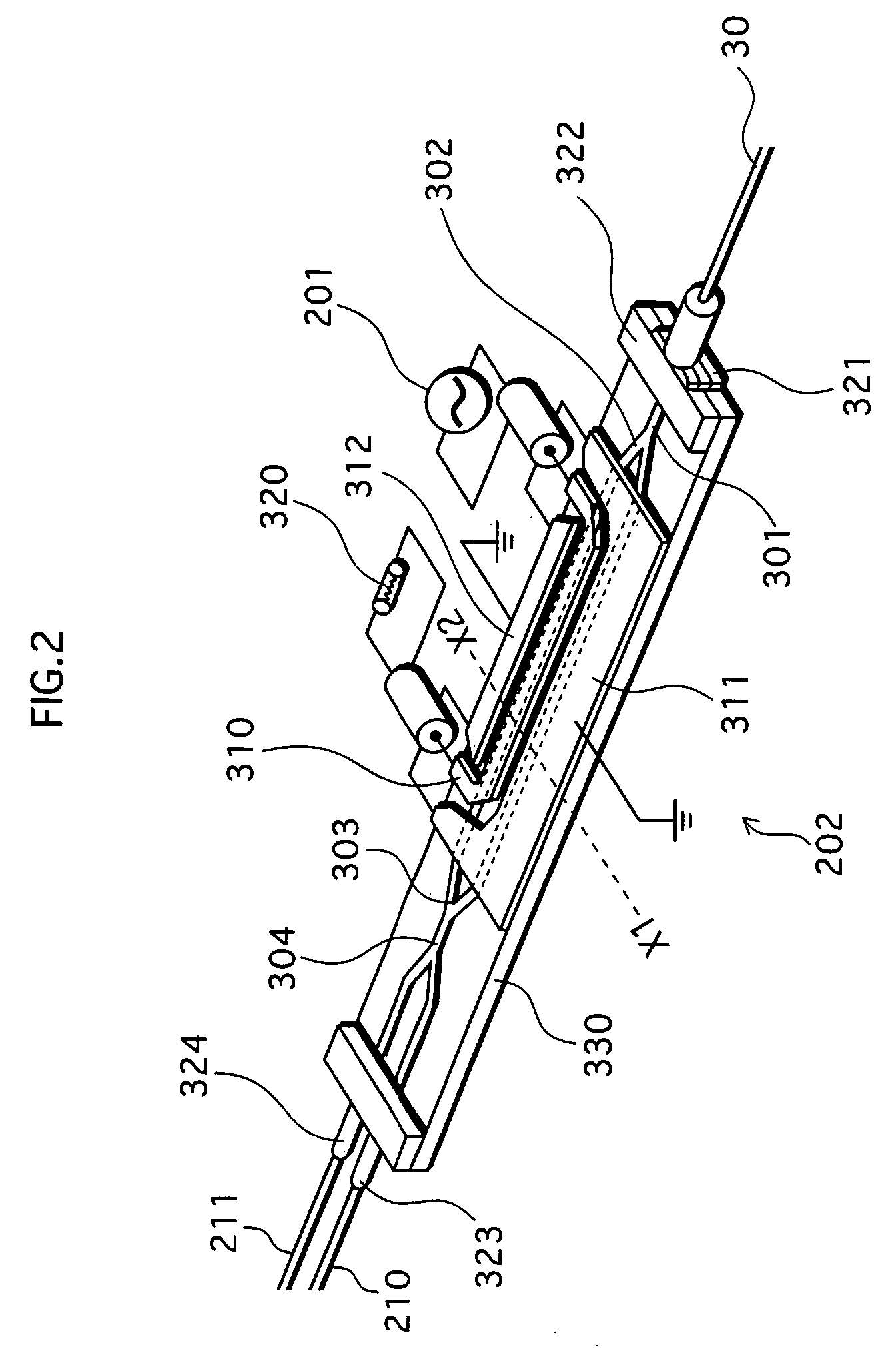Optical transmission system
a transmission system and optical transmission technology, applied in the direction of fibre transmission, distortion/dispersion elimination, electrical equipment, etc., can solve the problems of high construction cost of optical transmission system, difficult to apply conventional optical transmission system to commercial systems, etc., and achieve high-quality output electrical signals. , the effect of reducing construction cos
- Summary
- Abstract
- Description
- Claims
- Application Information
AI Technical Summary
Benefits of technology
Problems solved by technology
Method used
Image
Examples
first embodiment
1. The First Embodiment
[0021]The following is a description of an optical transmission system 1 according to the first embodiment of the present invention.
[0022]As FIG. 1 shows, the optical transmission system 1 includes an optical transmitter 10, an optical receiver 20, and an optical fiber 30. The optical transmitter 10 and the optical receiver 20 are connected to each other by the optical fiber 30.
[0023]The optical transmitter 10 converts an intermediate frequency signal (hereinafter called the “IF signal”) into an optical signal, and transmits the optical signal to the optical receiver 20 via the optical fiber 30. The optical receiver 20 receives the optical signal from the optical transmitter 10 via the optical fiber 30, and converts the IF signal into an RF signal with use of the received optical signal. Then, the optical receiver 20 transmits the RF signal to a mobile telephone 40. The IF signal is an electrical signal having a frequency which is different from that of the RF...
second embodiment
2. The Second Embodiment
[0061]The following is a description of an optical transmission system 1A according to the second embodiment of the present invention.
[0062]As FIG. 5 shows, the optical transmission system 1A includes an optical transmitter 10A, an optical receiver 20A, and an optical fiber 30A. The optical transmitter 10A and the optical receiver 20A are connected to each other by the optical fiber 30A.
[0063]The optical transmitter 10A converts an IF signal into an optical signal, change the optical signal to be a non-polarized signal, and then transmits the non-polarized optical signal to the optical receiver 20A via the optical fiber 30A. The optical receiver 20A receives the non-polarized optical signal from the optical transmitter 10A via the optical fiber 30A, and converts an IF signal into an RF signal with use of the received non-polarized optical signal. Then, the optical receiver 20A transmits the RF signal to a mobile telephone 40A.
2.1 Structure of the Optical Tran...
PUM
 Login to View More
Login to View More Abstract
Description
Claims
Application Information
 Login to View More
Login to View More - R&D
- Intellectual Property
- Life Sciences
- Materials
- Tech Scout
- Unparalleled Data Quality
- Higher Quality Content
- 60% Fewer Hallucinations
Browse by: Latest US Patents, China's latest patents, Technical Efficacy Thesaurus, Application Domain, Technology Topic, Popular Technical Reports.
© 2025 PatSnap. All rights reserved.Legal|Privacy policy|Modern Slavery Act Transparency Statement|Sitemap|About US| Contact US: help@patsnap.com



